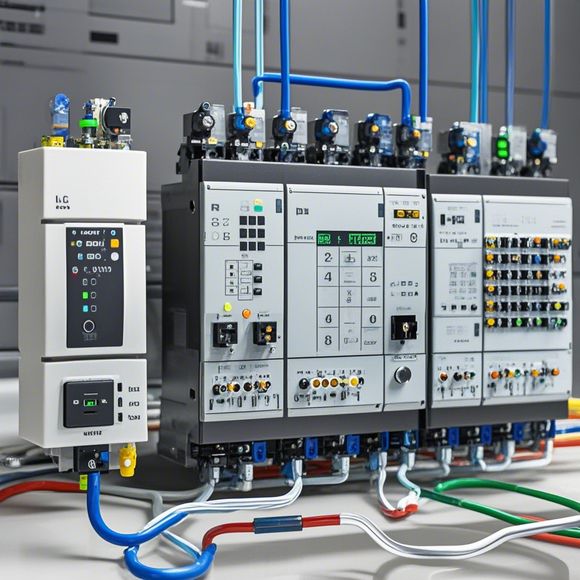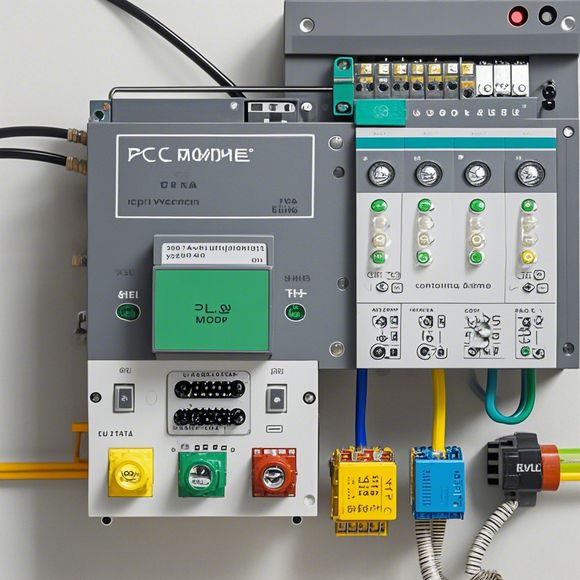What is a PLC (Programmable Logic Controller)?
A Programmable Logic Controller, or PLC, is a digital control system designed to automate various industrial processes. It is a device that can be programmed to perform specific tasks based on instructions from a computer. PLCs are commonly used in industries such as manufacturing, process control, and automation. They can be configured to handle a wide range of functions, such as temperature control, motion control, and process monitoring. PLCs are often preferred over mechanical controllers because they offer greater flexibility and efficiency in terms of speed and accuracy. In addition, they are easier to program and maintain than mechanical controllers.
Introduction to Programmable Logic Controllers (PLCs):
In today's world of automation, where efficiency and precision are paramount, Programmable Logic Controllers play a crucial role. A PLC is an intelligent device that can be programmed to control various industrial processes. It stands for "Programmable Logic Controller" and is designed to perform complex tasks such as monitoring, controlling, and adjusting systems.
What is a PLC?
A PLC is an electronic controller that is used in industrial settings to automate processes. It works by receiving commands from a computer or other input devices and then acting on those commands to control the flow of materials or energy. The PLC can be programmed to perform any task that requires precise and consistent results, making it a valuable tool for businesses looking to improve their operations.

Functions of PLCs:
1、Process Control: PLCs control the flow of materials or energy through various industrial processes, ensuring that they are processed efficiently and accurately.
2、Data Acquisition and Analysis: PLCs collect data from various sensors and equipment, allowing businesses to monitor their operations in real-time. This data can then be analyzed to identify areas for improvement and optimize the overall performance of the process.
3、Safety Monitoring: PLCs ensure that safety regulations are followed during the manufacturing process. They can detect potential hazards and take corrective action to prevent accidents.
4、Scheduling and Alarms: PLCs can schedule tasks and set alarms based on predefined criteria, ensuring that critical operations are carried out on time.
5、Quality Control: PLCs help in achieving consistent product quality by regulating the temperature, pressure, and other parameters within the production line.
6、Automation of Non-Repetitive Tasks: PLCs can automate non-repetitive tasks, freeing up human operators to focus on more complex and repetitive jobs.
7、Network Connectivity: PLCs can communicate with each other and other devices on the network, allowing them to work together to achieve a unified goal.
8、Energy Efficiency: By optimizing the use of resources and reducing waste, PLCs can help businesses save money on energy costs.
9、Customization: PLCs are programmable, allowing businesses to customize their control systems according to their specific needs.
Benefits of Using PLCs:
1、Cost Reduction: PLCs can reduce labor costs by automating repetitive tasks, while also improving efficiency and reducing downtime.

2、Productivity Improvement: PLCs can help businesses increase productivity by streamlining the production process and reducing errors.
3、Environmental Impact: By reducing energy usage and waste generation, PLCs can help businesses reduce their environmental footprint.
4、Compliance with Regulations: PLCs can help businesses comply with industry regulations and standards, ensuring compliance with local and international laws.
5、Innovation: PLCs provide a platform for innovation in industries such as manufacturing, healthcare, and transportation, enabling businesses to stay ahead of the competition.
Conclusion:
In conclusion, Programmable Logic Controllers (PLCs) are essential tools for modern industrial operations. They enable businesses to control processes with precision, efficiency, and accuracy, leading to cost savings, productivity improvements, and compliance with regulations. As technology continues to advance, we can expect PLCs to become even more sophisticated and integrated into the broader automation ecosystem.
Content expansion reading:
Content:
Hey there! If you're new to the world of automation or just curious about what a PLC controller is and how it works, you've come to the right place. In this article, we're going to break down everything you need to know about programmable logic controllers, from the basics to some of the more advanced functions. So, let's dive in and explore the world of PLCs!
First things first, what is a PLC controller? A PLC, or Programmable Logic Controller, is an industrial computer that's designed to control and automate various electromechanical processes. It's like the brain of an automated system, responsible for monitoring inputs, making decisions based on those inputs, and controlling outputs. PLCs are used in a wide range of industries, from manufacturing and automotive to food and beverage processing, and even in some home automation systems.
Now, let's talk about what a PLC actually does. At its core, a PLC is programmed to perform a series of logical operations. It does this by using a set of programming instructions that tell it what to do when certain conditions are met. For example, a PLC might be programmed to detect when a machine door is open and then to shut off the power to the machine to prevent accidents.
PLCs are incredibly versatile and can be programmed to handle a variety of tasks, including:

1、Sequence Control: This is where the PLC controls a process in a specific sequence, like starting a conveyor belt after a sensor detects that a part is in place.
2、Timing Operations: PLCs can be set to perform actions after a certain time delay, which is useful for processes that need to wait a specific amount of time before moving on to the next step.
3、Counting and Accumulating: They can count the number of times an event occurs or accumulate data over time, which is helpful in tracking production rates or inventory levels.
4、Data Handling: PLCs can store and manipulate data, allowing them to make decisions based on complex algorithms or changing conditions.
5、Communication: Modern PLCs can communicate with other devices and systems, both locally and over the internet, which is essential for integrating into larger automation networks.
6、Alarms and Safety: PLCs can monitor systems for abnormal conditions and trigger alarms or shut down processes to prevent damage or injury.
When it comes to programming a PLC, there are several different languages and methods that can be used, including ladder logic, function block diagrams, and even more traditional programming languages like C or Python. Ladder logic is the most common and is designed to be easy to read and understand, even for those without a programming background.
PLCs are built to be robust and reliable, with many operating 24/7 in harsh industrial environments. They're also designed to be easily reprogrammed, so if a process changes, the PLC can be updated to reflect those changes without the need for rewiring the entire system.
In conclusion, a PLC controller is a powerful tool that plays a crucial role in automating and controlling various processes. Its ability to handle complex tasks with reliability and ease of programming makes it an essential component in many industries. Whether you're looking to automate a simple machine or manage a large-scale production line, a PLC is likely to be at the heart of the operation.
Articles related to the knowledge points of this article:
PLC Controller Selection Guide for Foreign Trade Operations
PLC Controller for Manufacturing Automation
The cost of a PLC Controller: A Comprehensive Analysis
PLC Programming for Automation Control in the Manufacturing Industry
PLC (Programmable Logic Controller) Control System Basics
Plumbers Rule! The Role of PLC Controllers in the World of Waterworks